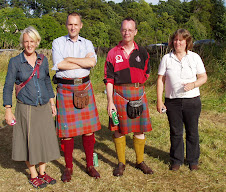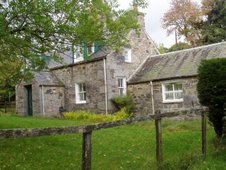Cat, I’d love to have Franklin’s “Ten Knitters You Meet in
Hell”. How prudent of you to save it! I’ll print it and keep it in one of his
books. I think it would be possible (and easy) to attach it to this blog as a
permanent page, like Queer Joe’s “100 Things About Me” -- but that, of course,
would be a violation of copyright. I email Franklin every year to ask him to
come and be a teacher at the EYF but he never answers, so is unlikely to respond
to a request for a waiver of copyright.
Anyway, he seems to be in Paris at the moment. But isn’t he just
back from Rome? Wouldn’t it have been easier to go directly from one to the
other?
I’m nearly finished (one more bump) with the edging for my mini-hap
in Donna Smith’s class at the Shetland Wool Adventure. It has imperfections. I
would almost say it is too easy to knit accurately. I used lace-weight yarn. I
am seriously tempted to try again in Shetland jumper-weight. The instructions
leave the question open. Jumper-weight is common enough for haps.
Maureen, I was terribly encouraged to learn that yours, too,
wasn’t very bumpy on the outside edge.
I also got the yarn out, and a skein of it wound, for Thomas’
Calcutta Cup scarf. I think I’ll even knit a swatch. My plan is to use Pattern
No. 100 in Gaughan’s Knitted Cable Sourcebook. It’s one of the ones she
recommends for looking good on both sides. It’s fascinating to compare the photograph
with the chart. The former looks as if you’d be struggling to twist every
stitch. The latter looks easy-peasy.
Anybody who has the book: what would you guess is the edging
she uses on the samples? I thought I’d try knitting the first stitch, and then
doing three stitches in seed stitch, but I doubt if that’s right.
Reading
I finished Ruth Rendell’s “Portobello”. It’s far from her
best – but awfully good, compared to almost anybody else. I have sunk down gratefully
with Trollope’s “Cousin Henry” which I already had in Kindle format.
I got an ad today from Amazon for Wilkie Collins. I haven’t
read him for many, many years – and maybe, even then, nothing but “Woman in
White”. It’s not a bad idea, and he’s very cheap, being classic. He was named
after the artist David Wilkie, but I don’t know why – was his father a mate of
the artist’s?




According to the introduction to my Penguin English Library Moonstone, his father was a landscape painter and Royal Academician "with a real flair for cultivating aristocratic patrons" but it doesn't explicitly explain how he and Sir David knew each other.
ReplyDeleteThe Moonstone is well worth reading. And free on Kindle, I think. I found the online cache for some of the Twist Materials, it would be a shame to lose them. I’ll have a peek at the Gaughan book and see if I can figure out anything different.
ReplyDeleteBest as I can figure it is RS p1, k1, p1, k1 then all purl on the WS
ReplyDeleteThirding the recommendation for The Moonstone; it's one of my favourite books!
ReplyDelete